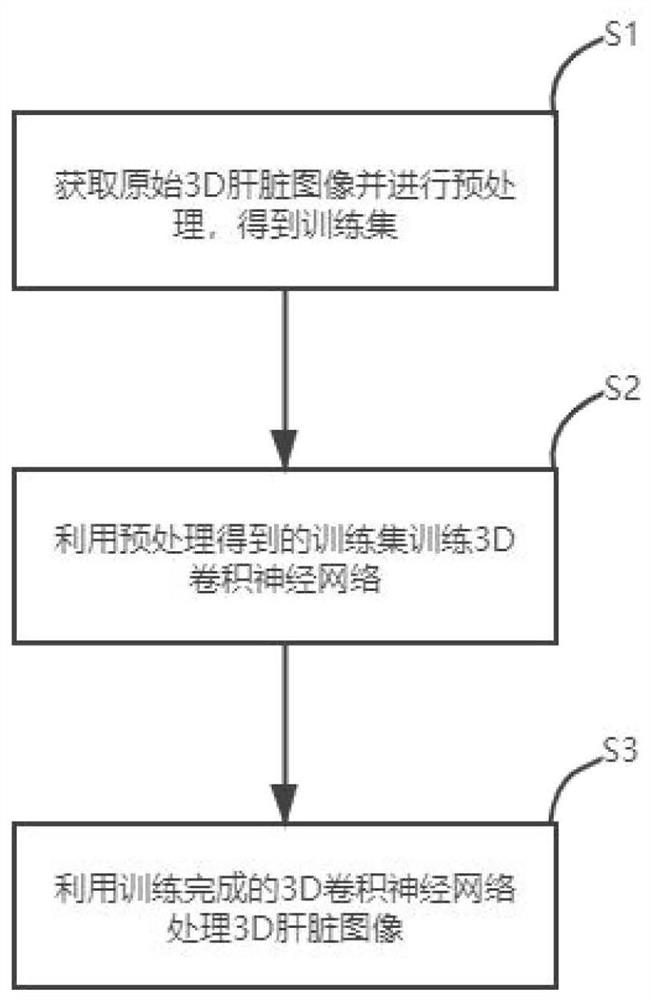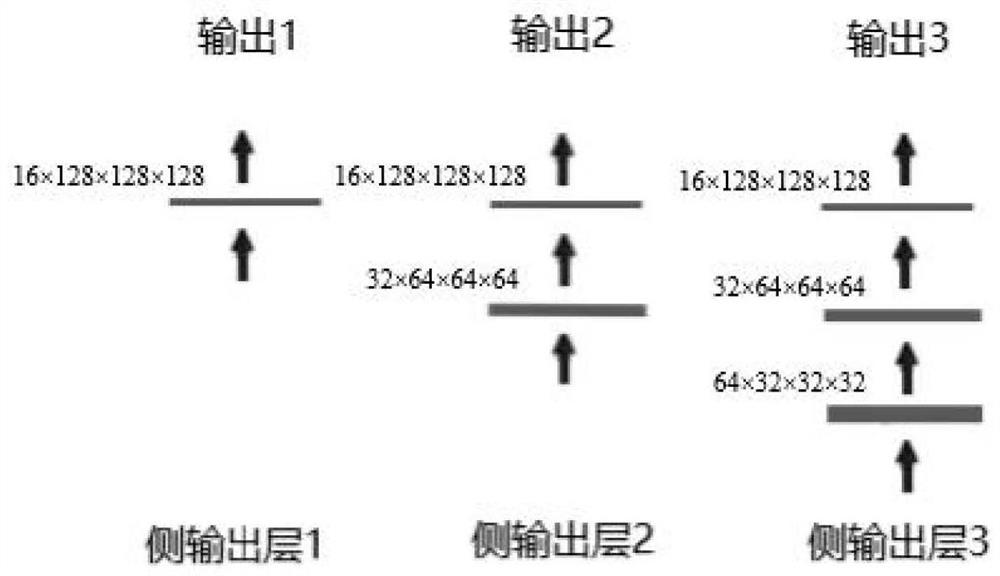Liver blood vessel segmentation method based on CT image
A technology of liver blood vessels and CT images, applied in the field of medical image processing, can solve problems such as high signal-to-noise ratio, large differences between different individuals, and difficult to handle small blood vessel segmentation, and achieve the effect of improving the segmentation effect and improving the effect
- Summary
- Abstract
- Description
- Claims
- Application Information
AI Technical Summary
Problems solved by technology
Method used
Image
Examples
Embodiment Construction
[0024] Below in conjunction with accompanying drawing and embodiment, technical solution of the present invention is described further:
[0025] Provided in this embodiment is a liver vessel segmentation method based on CT images, such as figure 1 shown, including:
[0026] Step 1. Obtain the original 3D liver image and perform preprocessing to obtain the training set. In this embodiment, the original 3D liver image is adjusted for window width and level, and randomly cropped according to the patch size of 128×128×128, as a training set, in order to eliminate the uneven brightness distribution on the entire image problem, improving the contrast of blood vessels through illumination correction and smoothing CT image noise.
[0027] Step 2, using the obtained training set to train the convolutional neural network;
[0028] Such as figure 2 , the convolutional neural network in this embodiment adopts the Unet network structure, and the convolutional neural network has a tota...
PUM
 Login to View More
Login to View More Abstract
Description
Claims
Application Information
 Login to View More
Login to View More - R&D
- Intellectual Property
- Life Sciences
- Materials
- Tech Scout
- Unparalleled Data Quality
- Higher Quality Content
- 60% Fewer Hallucinations
Browse by: Latest US Patents, China's latest patents, Technical Efficacy Thesaurus, Application Domain, Technology Topic, Popular Technical Reports.
© 2025 PatSnap. All rights reserved.Legal|Privacy policy|Modern Slavery Act Transparency Statement|Sitemap|About US| Contact US: help@patsnap.com



